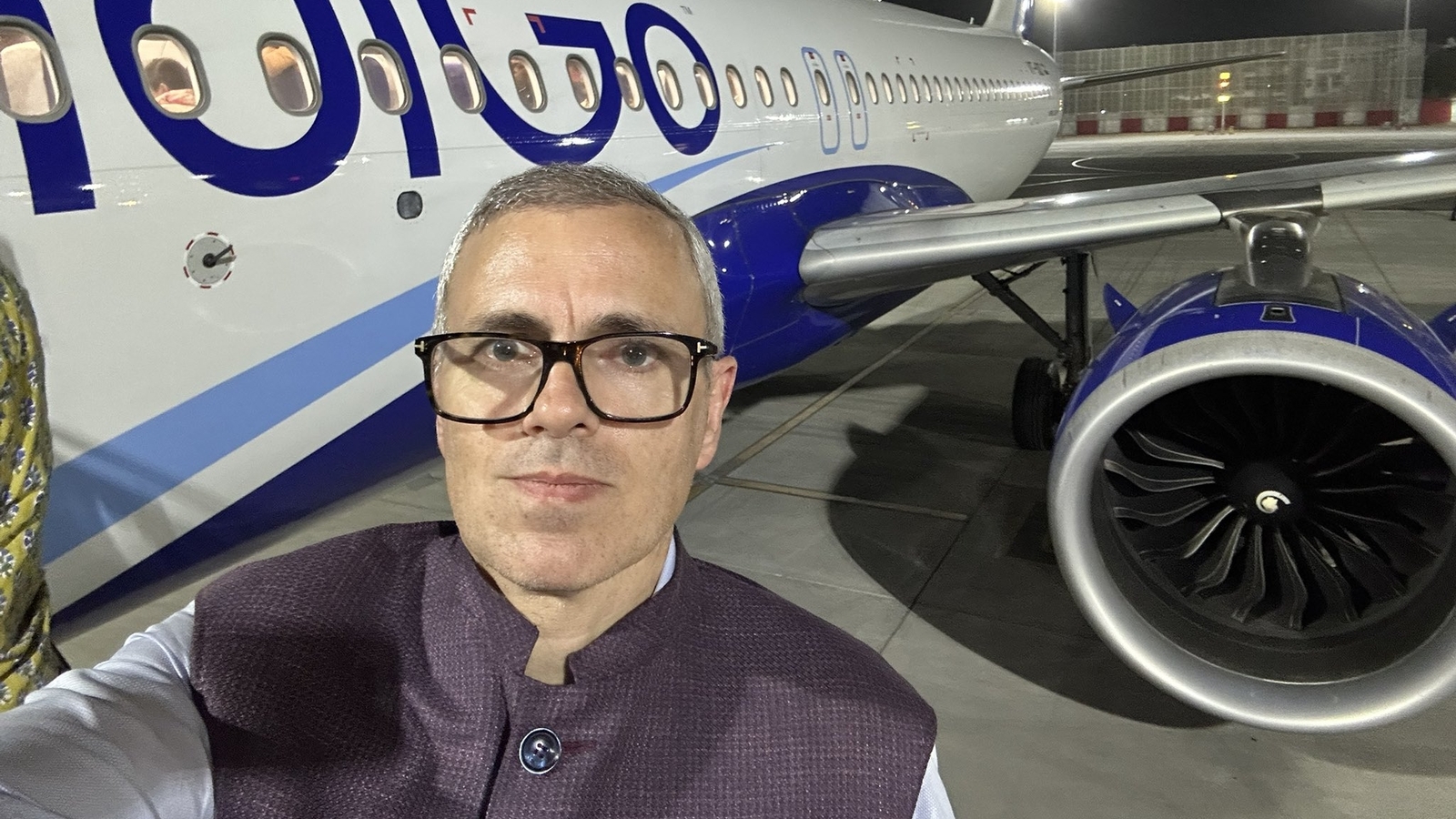Omar Abdullah Slams Delhi Airport After Flight Diversion
National NationalPosted by AI on 2025-04-20 07:02:51 | Last Updated by AI on 2025-08-03 23:56:16
Share: Facebook | Twitter | Whatsapp | Linkedin Visits: 7

"Bloody s**t show," tweeted former Jammu and Kashmir Chief Minister Omar Abdullah, encapsulating the frustration of passengers aboard an IndiGo flight diverted to Jaipur after three hours in the air. The incident, occurring late at night, left travelers stranded on the tarmac past midnight, sparking outrage and raising questions about air traffic management.
Abdullah's flight, originally destined for Delhi, was unexpectedly rerouted to Jaipur. The reason for the diversion remains unclear, adding to the passengers' anxieties. Confined to the aircraft well past midnight, passengers faced escalating discomfort and uncertainty. Abdullah voiced his displeasure on social media, criticizing the Delhi Airport and the overall handling of the situation. His tweet, using strong language, reflected the growing frustration among those onboard. The incident quickly gained traction online, with many echoing Abdullah's sentiments and demanding accountability.
The unexpected diversion and subsequent delay disrupted travel plans for numerous passengers. The late-night arrival in Jaipur, coupled with the extended time spent on the grounded aircraft, undoubtedly caused significant inconvenience. The lack of clear communication regarding the reason for the diversion and the expected duration of the delay further exacerbated the situation. This incident highlights the potential for travel disruptions due to unforeseen circumstances and the importance of effective communication between airlines and passengers, especially during such challenging events. The frustration expressed by Abdullah and other passengers underscores the need for improved contingency plans and passenger support protocols in the event of flight diversions.
The incident raises several questions. What prompted the flight's diversion to Jaipur? What measures were taken to ensure the well-being of the stranded passengers? What steps will be implemented to prevent similar incidents in the future? The public awaits answers from both the airline and airport authorities. The incident serves as a reminder of the potential for unforeseen circumstances to disrupt air travel and the importance of robust contingency planning and transparent communication. As travelers grapple with the aftermath of the disruption, the focus now shifts to understanding the root cause of the diversion and ensuring improved passenger experiences in the future. The incident is likely to prompt further discussions about air traffic management protocols and passenger rights.
Search
Categories
- Sports
- Business
- History
- Politics
- International
- Science & Technology
- Social Issues
- Disaster Management
- Current Affairs
- Education
- Startup Business
- Startup News
- Awards
- Community Services
- Fundraising Events
- Volunteer Services
- Health Initiatives
- Innovations and Initiatives
- In News
- dummybanners
- Awards
- Partners
- Products
- Press Releases
- News
- Fast Check
- South
- సినిమా
- Gallery
- Sunday Chronicle
- Hyderabad Chronicle
- లైఫ్ స్టైల్
- National
- క్రైం
- ట్రెండింగ్
- జాబ్స్
- అంతర్జాతీయo
- బిజినెస్
- రాజకీయం
- బిజినెస్
- సంపాదకీయం
- నవ్య
- చిత్ర జ్యోతి
- క్రీడలు
- జాతీయం
- తెలంగాణ
- తాజా వార్తలు
- మన పార్టీ
- మన నాయకత్వం
- మన విజయాలు
- డౌన్లోడ్స్
- మీడియా వనరులు
- కార్యకర్తలు
- North East Skill Center News
- Government Schemes
- Entrepreneurship Support
- Employment Opportunities
- Skill Training Programs
- Departments
- Investments
- Initiatives
- Resources
- Telangana IT Parks
- Events & Jobs
- Press Releases
- News
- Airport News
- Newtons Laws of Motion
- Karbonn in Business
- Investments in Karbonn
- Company quarterly sales
- Markets
- Auto News
- Industry
- Money
- Advertisements
- Stock target
- Company Updates
- Stock Market
- Company Sales
- Staffing and HR
- Constituency Assembly
- General News
- Srikalahasti Temple
- Bojjala Sudhir Reddy
- Technology & Innovation
- Sports
- Business
- Products
- Industries
- Services & Trainings
- Tools & Resources
- Technology Integration
- Drug Seizures & Arrests
- Telangana Narcotics
- Law & Enforcement
- Rehabilitation
- Nationwide Drug Policing
- Nigeria Seizures
- Global Operations
- Drug Awareness
- Drug Enforcement Tech
- NCB Drug Seizures
- Judicial Crackdown
- India's Surveillance Tools
- Cross-Border Links
- Women Safety
- Cyber Crimes
- Drug Abuse
- Traffic & Road Safety
- Community Connect
- Public Safety Alerts
- Citizen Assistance
- Nellore City News
- Politics & Administration
- Events & Festivals
- Agriculture & Rural
- Business & Economy
- Health & Wellness
Recent News
- Oppo's Innovative Cooling Technology Coming to India with K13 Turbo Series
- Pakistan, Afghanistan & UAE To Play T20I Tri-Series In Sharjah Prior To Asia Cup
- India Vs England 5th Test Day 2 Weather Forecast: Will Rain Delay The Match?
- Surprise Choice! Shardul Thakur Appointed New West Zone Captain
- Boxing Federation Of India Elections Set For August 21
- 'Force Majeure Pause': Odisha FC Suspend Players, Staff Contracts Amid ISL 2025/26 Limbo
- Manchester United Make Enquiry For Manchester City Goalkeeper Stefan Ortega
- Prajwal Revanna's Leaked Videos: Rape Case and 2,000 Obscene Clips